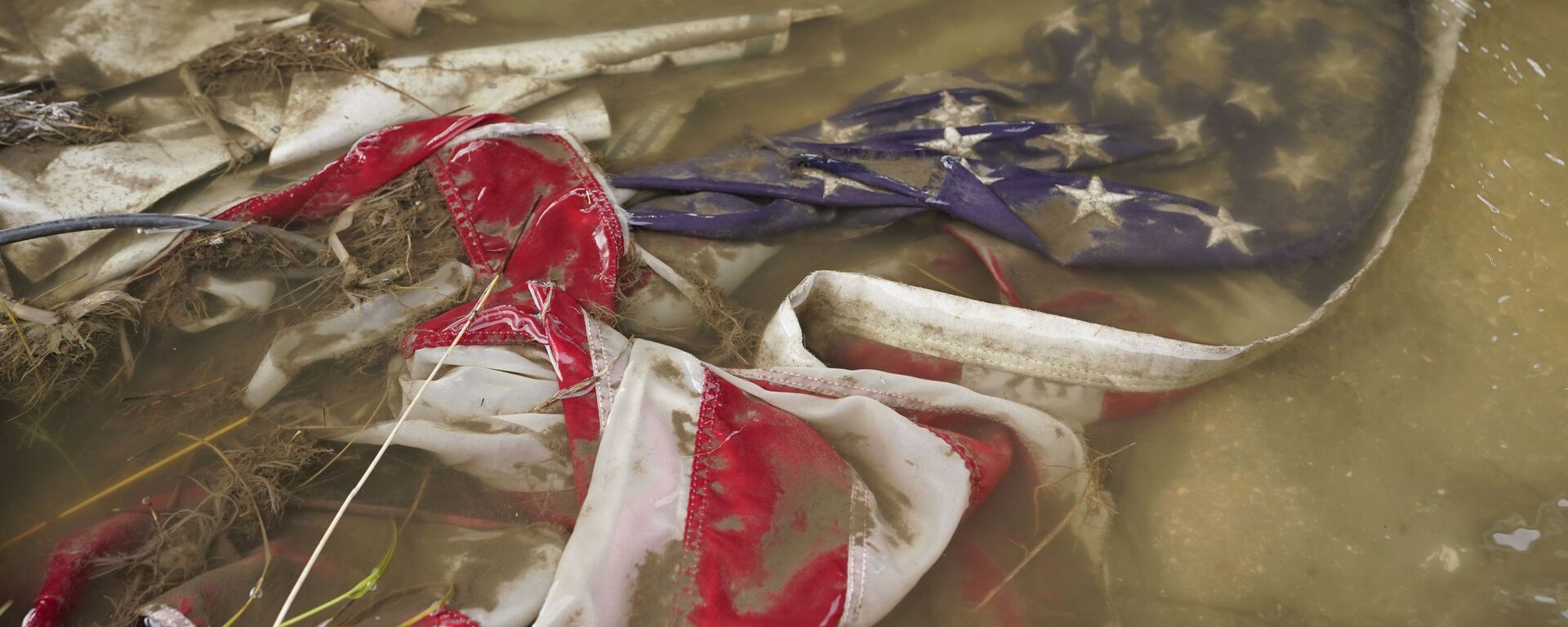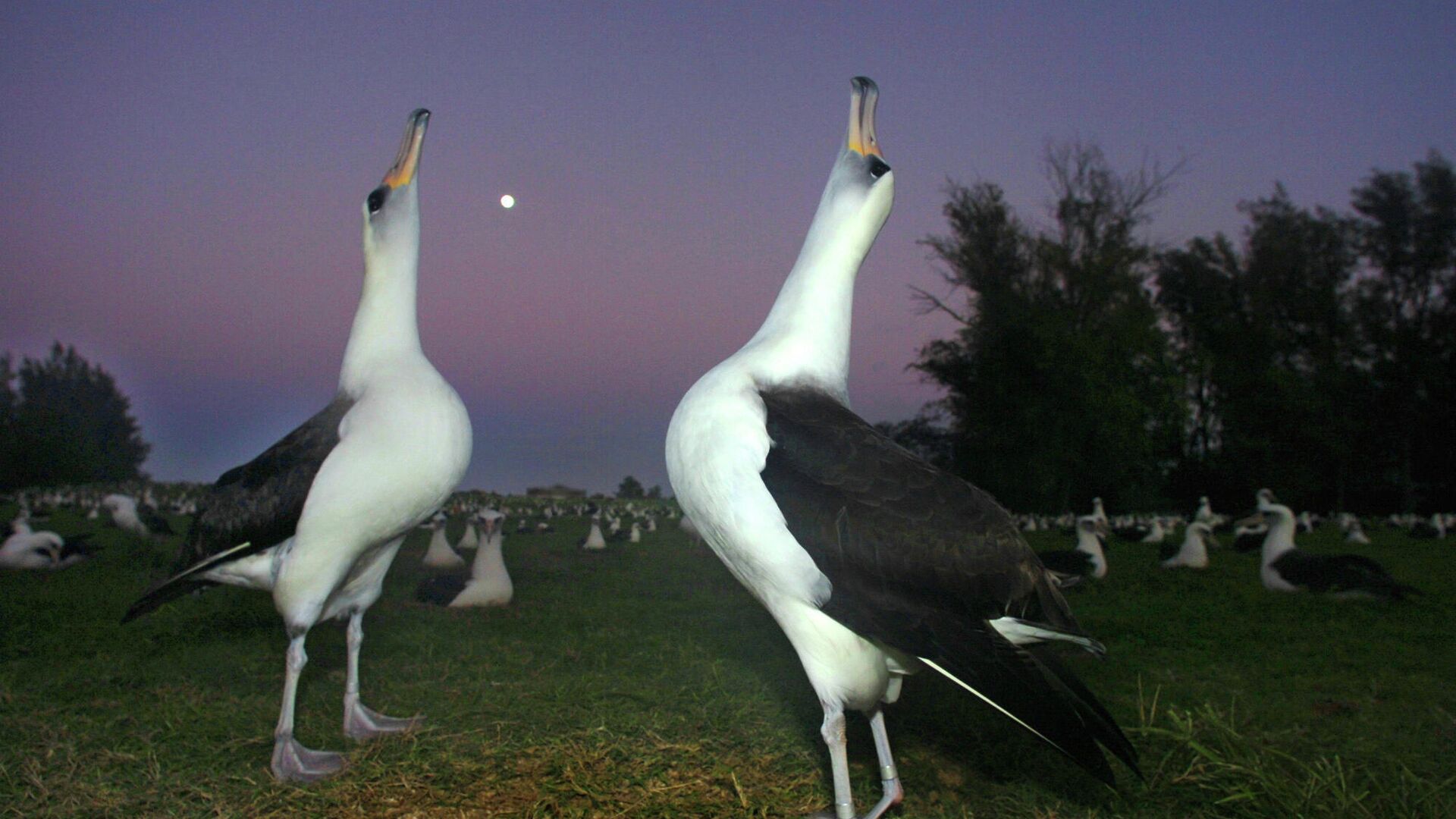https://sputnikglobe.com/20211125/honeymoon-phase-over-albatrosses-ditch-their-partners-when-water-gets-warm-1091009320.html
Honeymoon Phase Over? Albatrosses 'Ditch' Their Partners When Water Gets Warm
Honeymoon Phase Over? Albatrosses 'Ditch' Their Partners When Water Gets Warm
Sputnik International
With a higher life expectancy, Albatrosses can live for decades and spend years on the oceans. They come on land only during mating season and stay in a stable... 25.11.2021, Sputnik International
2021-11-25T11:35+0000
2021-11-25T11:35+0000
2023-04-21T10:42+0000
environment
climate change
global warming
birds
science & tech
https://cdn1.img.sputnikglobe.com/img/07e5/0b/19/1091015014_0:100:2001:1225_1920x0_80_0_0_0543cd431f3ed265a2b7042fff26cf38.jpg
For the first time, scientists have found evidence that other than breeding failure, the environment too can be a cause of separation among bird partners. According to researchers, over 90 percent of all bird species are monogamous and they remain loyal to their partners most of the time. Among these, the majestic albatrosses have a reputation of being the most faithful bird. However, an interesting behaviour was observed when the temperature of ocean water rises. During their examination in the Falkland Islands, Francesco Ventura, a conservation biologist at the University of Lisbon in Portugal and her team found that the divorce rate — typically less than 4 percent on average — surged to nearly 8 percent among albatrosses when the water gets warm. The team submitted its findings in Proceedings of the Royal Society B on Wednesday. Shockingly, the team also found that some female albatrosses that had bred successfully ditched their partners during the years when the ocean waters were warm. The team studied data collected from 2004 to 2019 on a large colony of black-browed albatrosses (Thalassarche melanophris) living on New Island in the Falkland Islands. Reportedly, the scientists recorded nearly 2,900 breeding attempts in 424 females and tracked the separation of the birds. Later, they compared previous breeding success in individual pairs to understand the influence of the environment on their relationship. Their calculation revealed that the rate of divorce is directly proportional to an increase in temperature. According to scientists, this climate-change-influenced behaviour can lower breeding success and eventually lead to a decline in population.
https://sputnikglobe.com/20211013/rising-sea-levels-may-put-hundreds-of-millions-of-people-underwater-climate-change-study-finds-1089874693.html
Sputnik International
feedback@sputniknews.com
+74956456601
MIA „Rossiya Segodnya“
2021
Sushmita Panda
https://cdn1.img.sputnikglobe.com/img/07e5/05/12/1082926186_0:0:2048:2048_100x100_80_0_0_4474d0d7e27a36878eb8727832be74b4.jpg
Sushmita Panda
https://cdn1.img.sputnikglobe.com/img/07e5/05/12/1082926186_0:0:2048:2048_100x100_80_0_0_4474d0d7e27a36878eb8727832be74b4.jpg
News
en_EN
Sputnik International
feedback@sputniknews.com
+74956456601
MIA „Rossiya Segodnya“
Sputnik International
feedback@sputniknews.com
+74956456601
MIA „Rossiya Segodnya“
Sushmita Panda
https://cdn1.img.sputnikglobe.com/img/07e5/05/12/1082926186_0:0:2048:2048_100x100_80_0_0_4474d0d7e27a36878eb8727832be74b4.jpg
environment, climate change, global warming, birds, science & tech
environment, climate change, global warming, birds, science & tech
Honeymoon Phase Over? Albatrosses 'Ditch' Their Partners When Water Gets Warm
11:35 GMT 25.11.2021 (Updated: 10:42 GMT 21.04.2023) With a higher life expectancy, Albatrosses can live for decades and spend years on the oceans. They come on land only during mating season and stay in a stable relationship, which plays a crucial role in the marine environment. The researchers believe the rising divorce rate among these birds can have "severe repercussions".
For the first time, scientists have found evidence that other than breeding failure, the environment too can be a cause of separation among bird partners.
According to researchers, over 90 percent of all bird species are monogamous and they remain loyal to their partners most of the time.
Among these, the majestic albatrosses have a reputation of being the most faithful bird.
However, an interesting behaviour was observed when the temperature of ocean water rises.
During their examination in the Falkland Islands, Francesco Ventura, a conservation biologist at the University of Lisbon in Portugal and her team found that the divorce rate — typically less than 4 percent on average — surged to nearly 8 percent among albatrosses when the water gets warm.
The team submitted its findings in
Proceedings of the Royal Society B on Wednesday.
Shockingly, the team also found that some female albatrosses that had bred successfully ditched their partners during the years when the ocean waters were warm.
"The result suggests that as the climate changes as a result of human activity, higher instances of divorce in albatrosses and perhaps other socially monogamous animals may be “an overlooked consequence,” the researchers write.

13 October 2021, 00:37 GMT
The team studied data collected from 2004 to 2019 on a large colony of black-browed albatrosses (Thalassarche melanophris) living on New Island in the Falkland Islands.
Reportedly, the scientists recorded nearly 2,900 breeding attempts in 424 females and tracked the separation of the birds.
Later, they compared previous breeding success in individual pairs to understand the influence of the environment on their relationship. Their calculation revealed that the rate of divorce is directly proportional to an increase in temperature.
According to scientists, this climate-change-influenced behaviour can lower breeding success and eventually lead to a decline in population.



